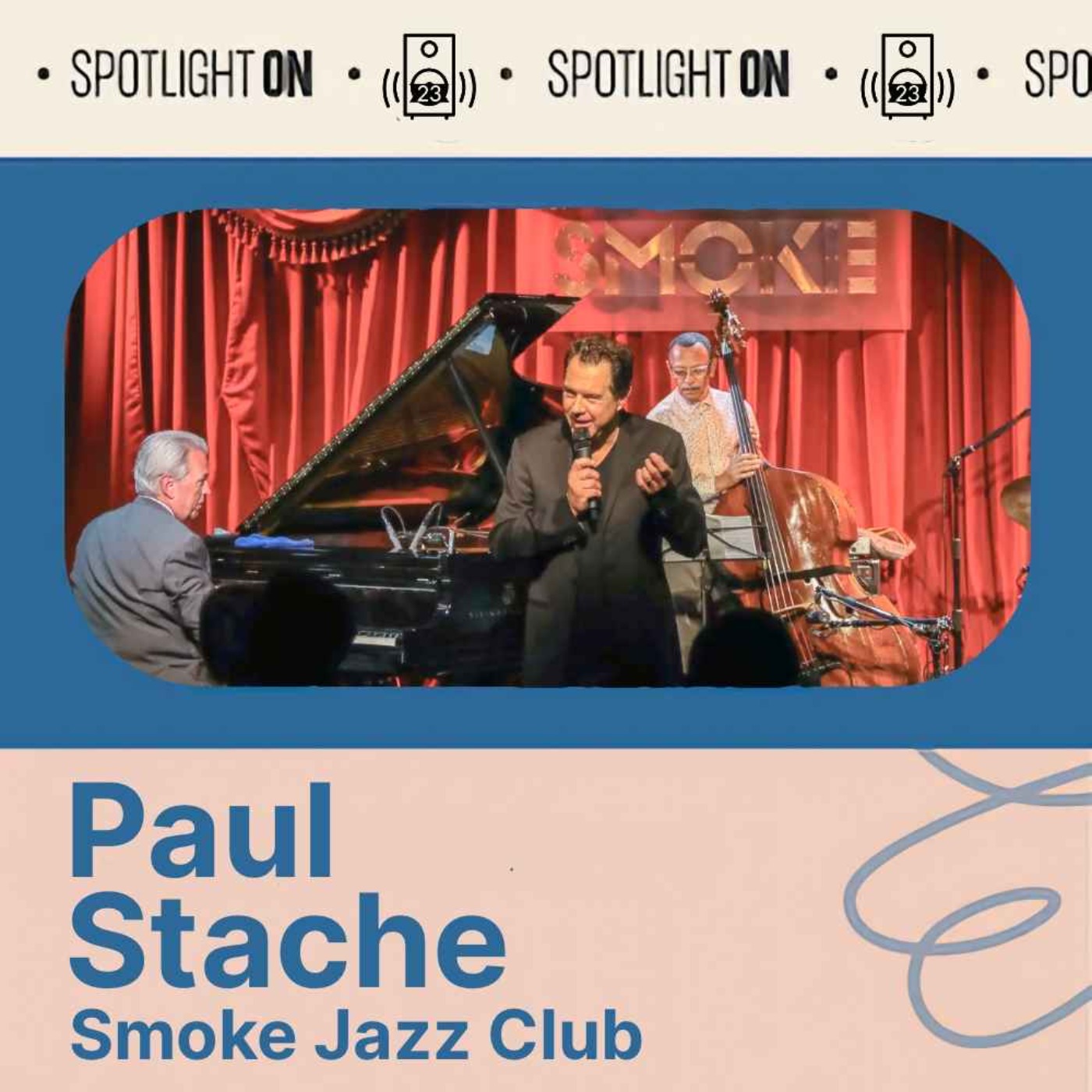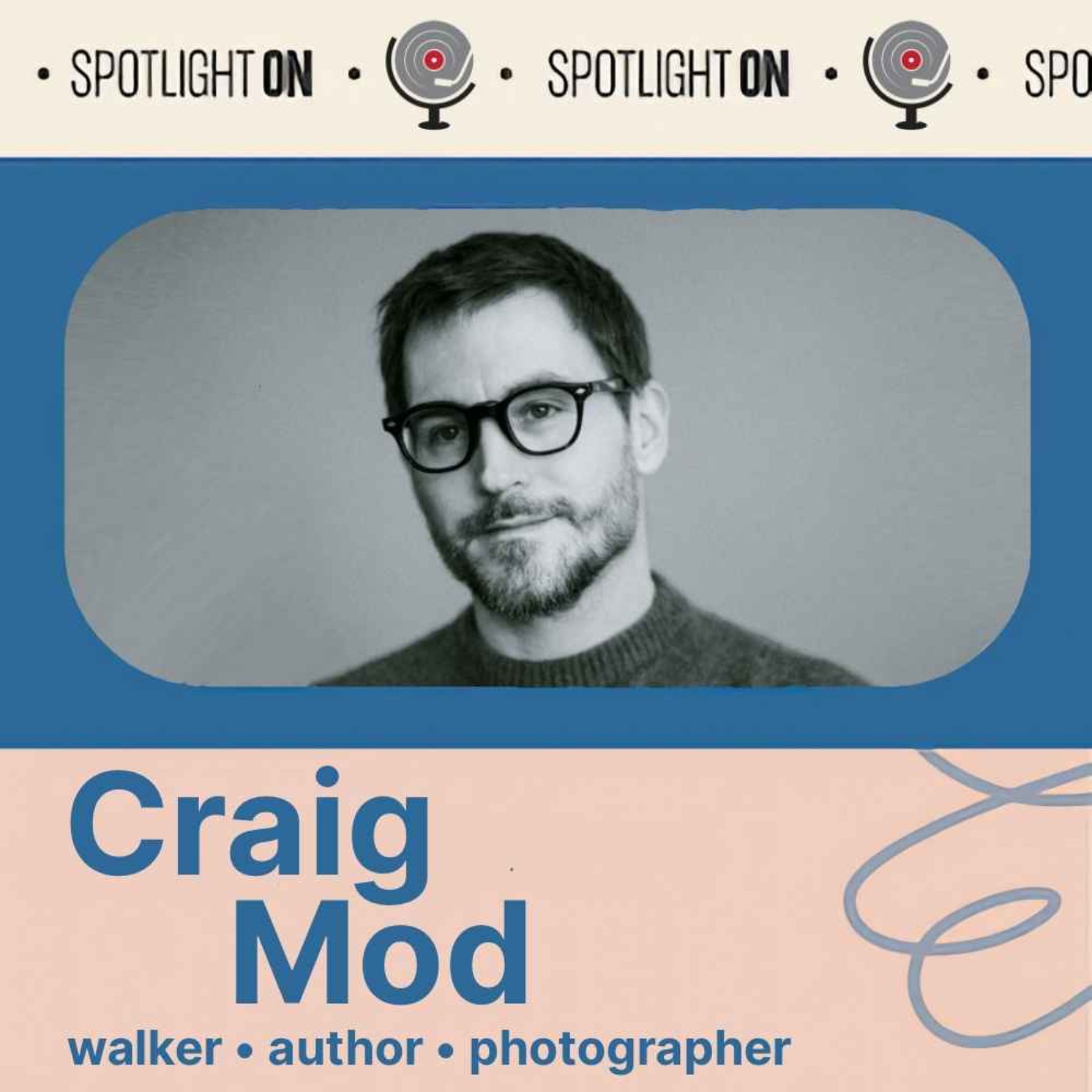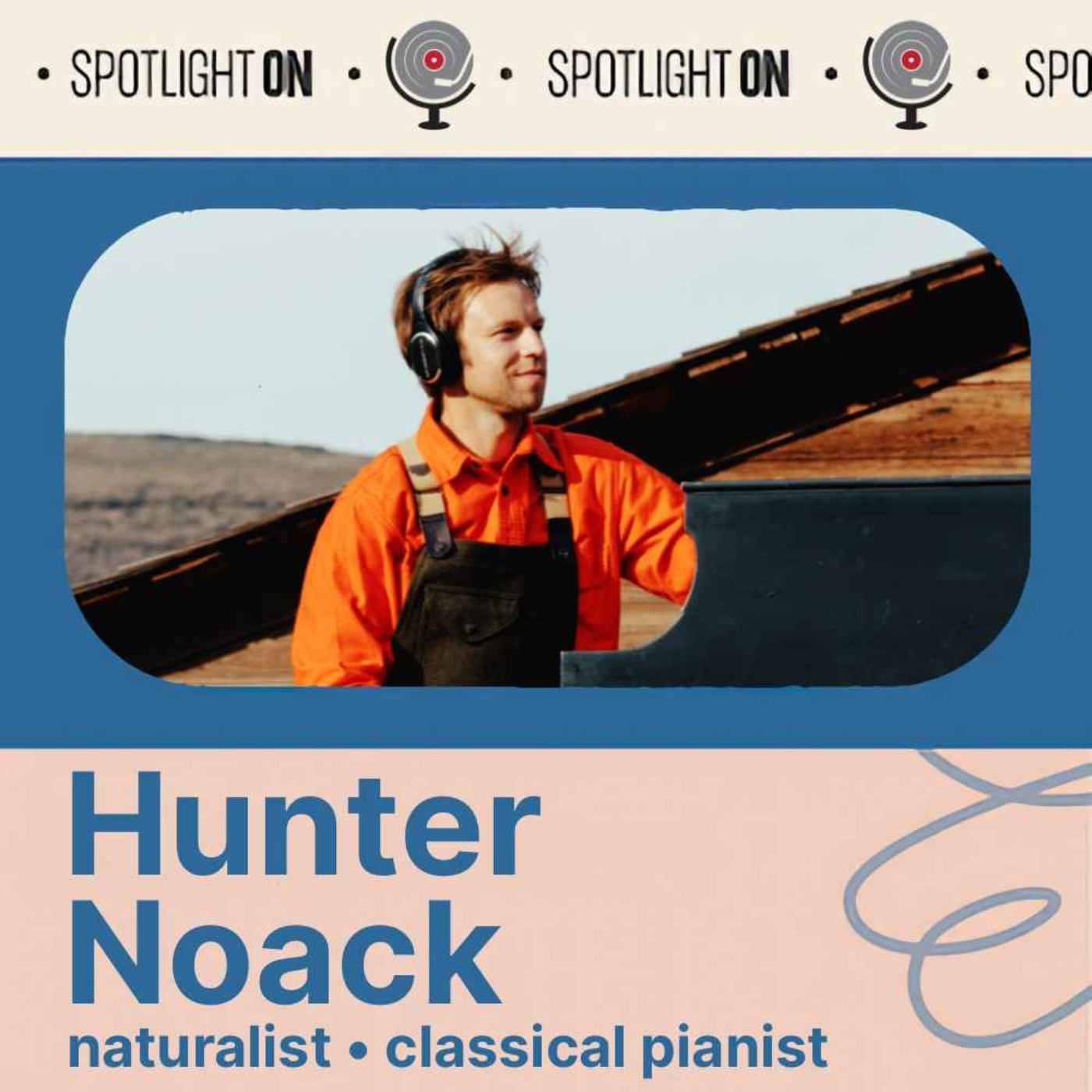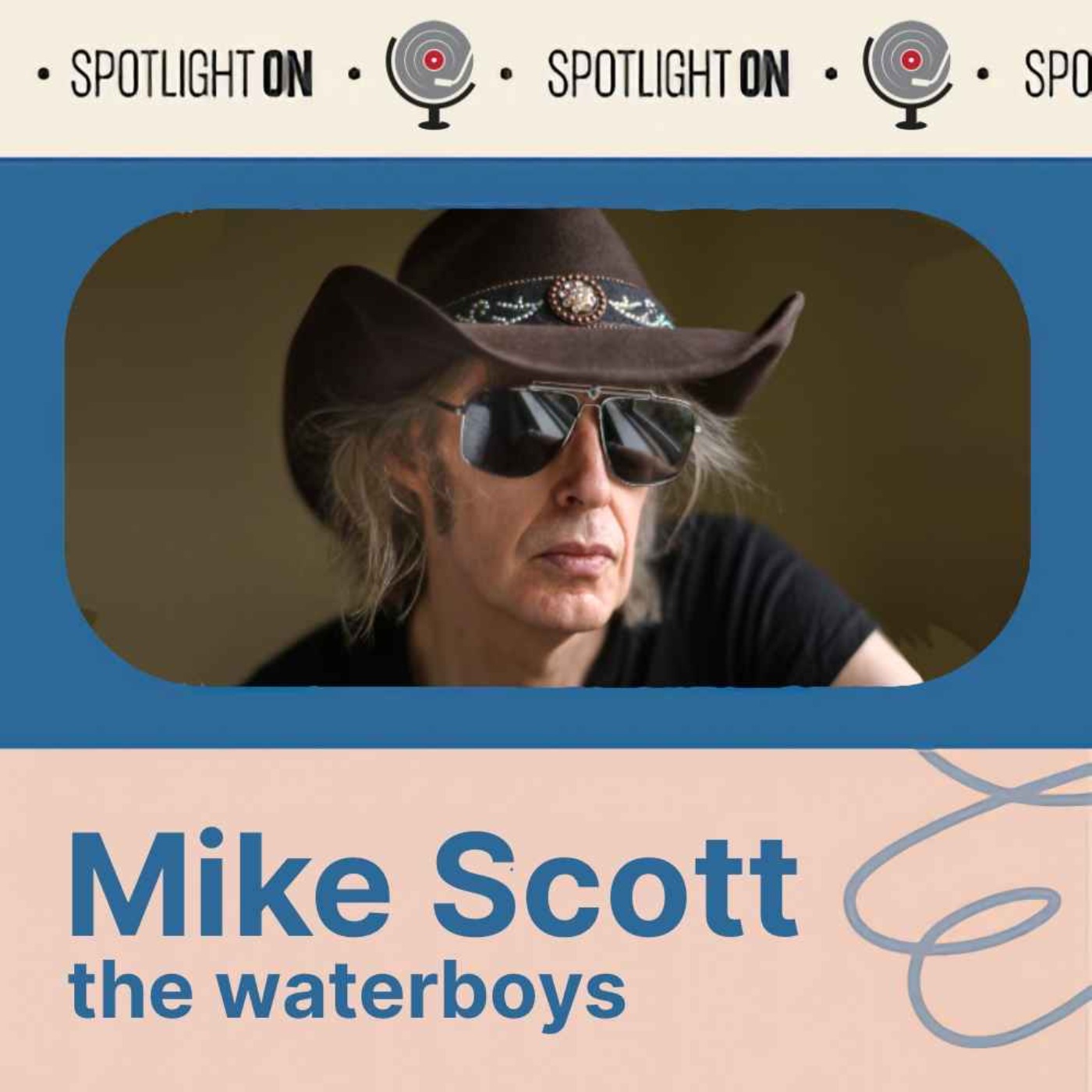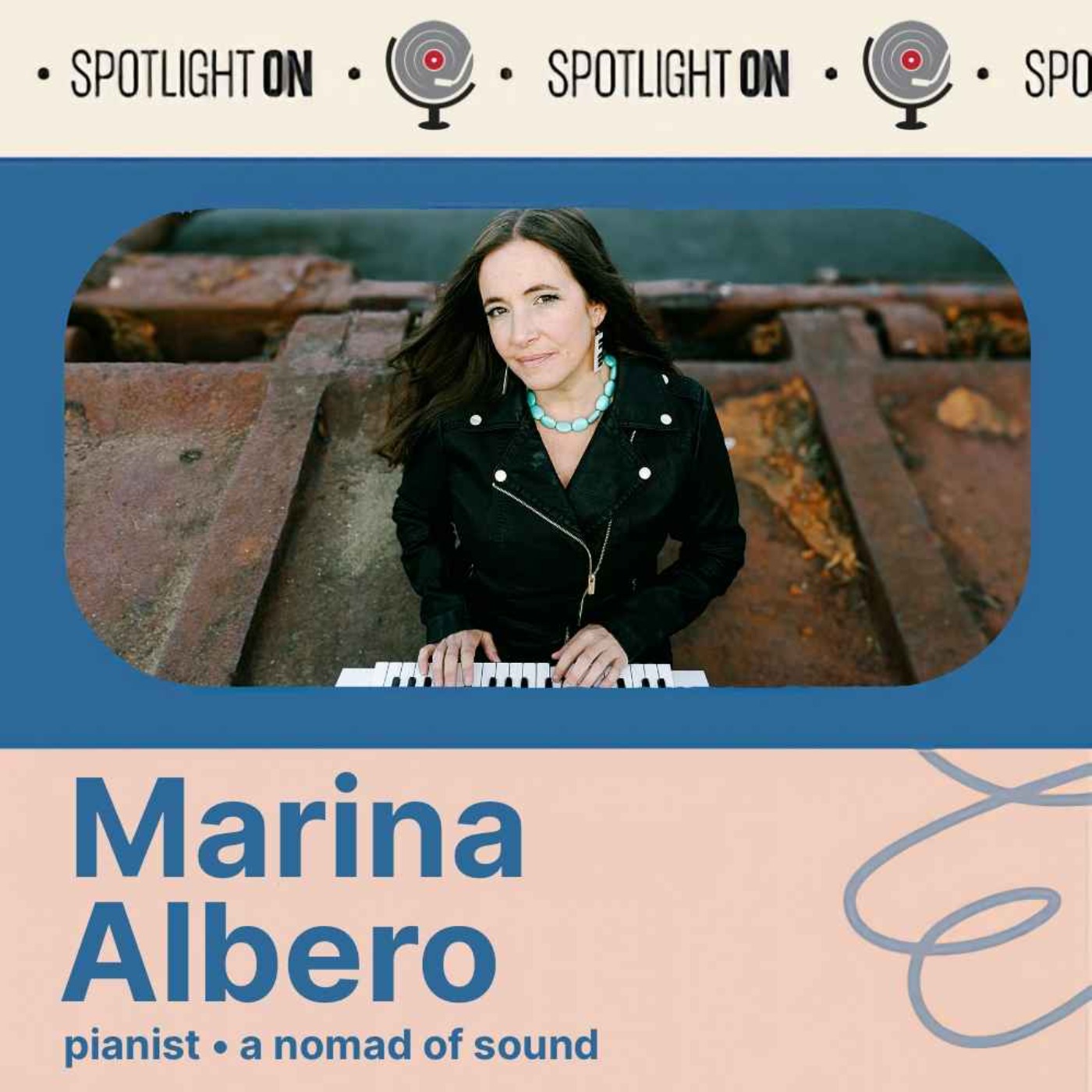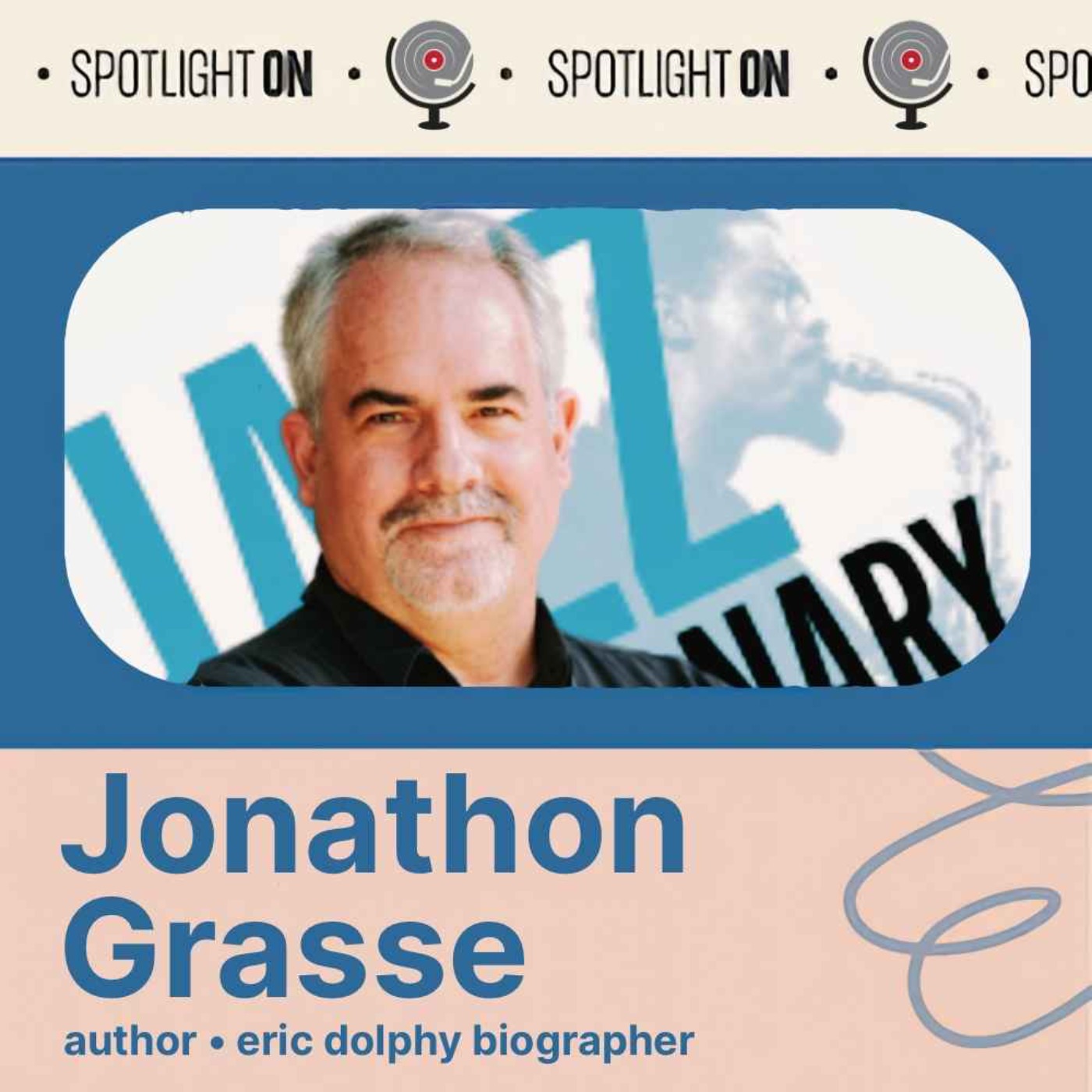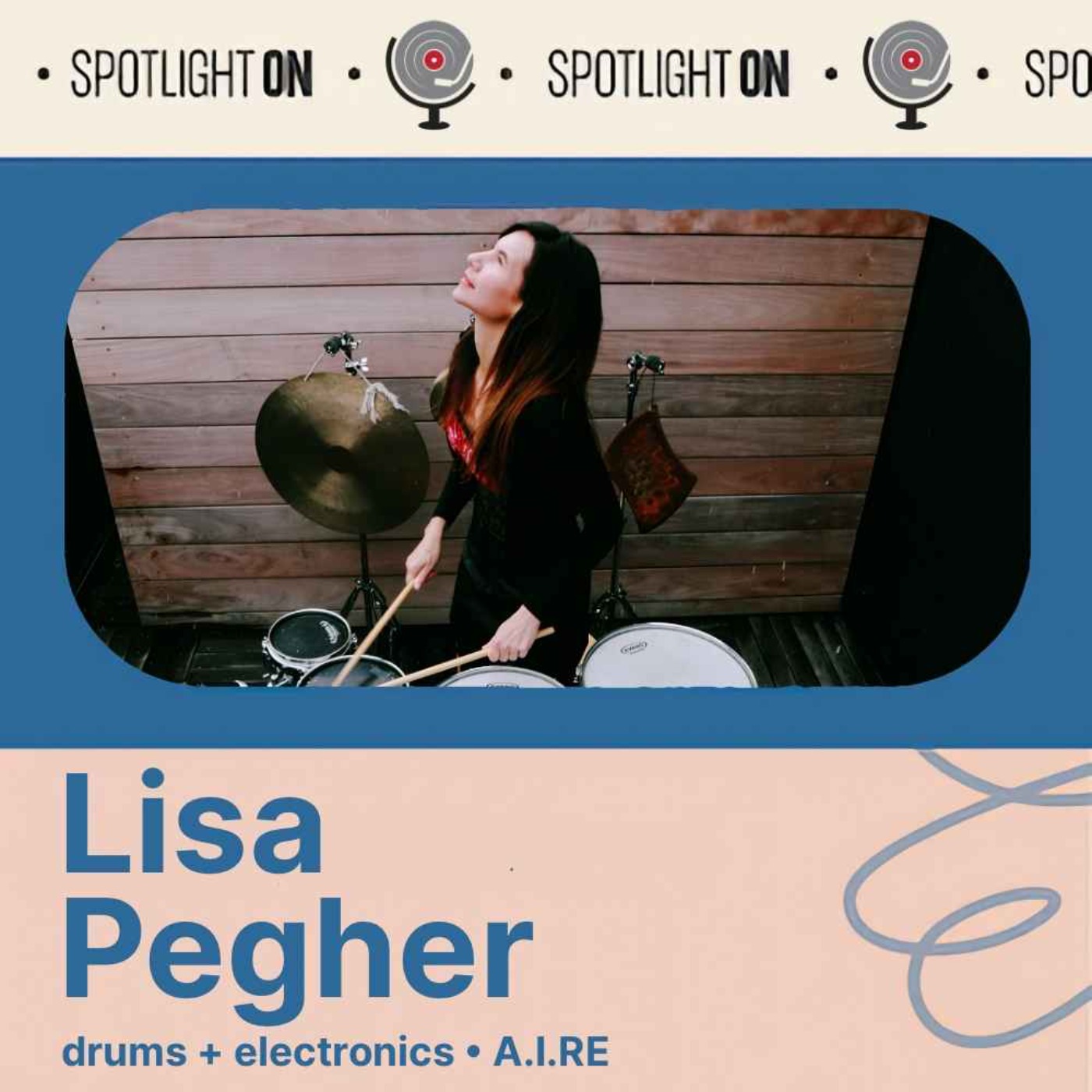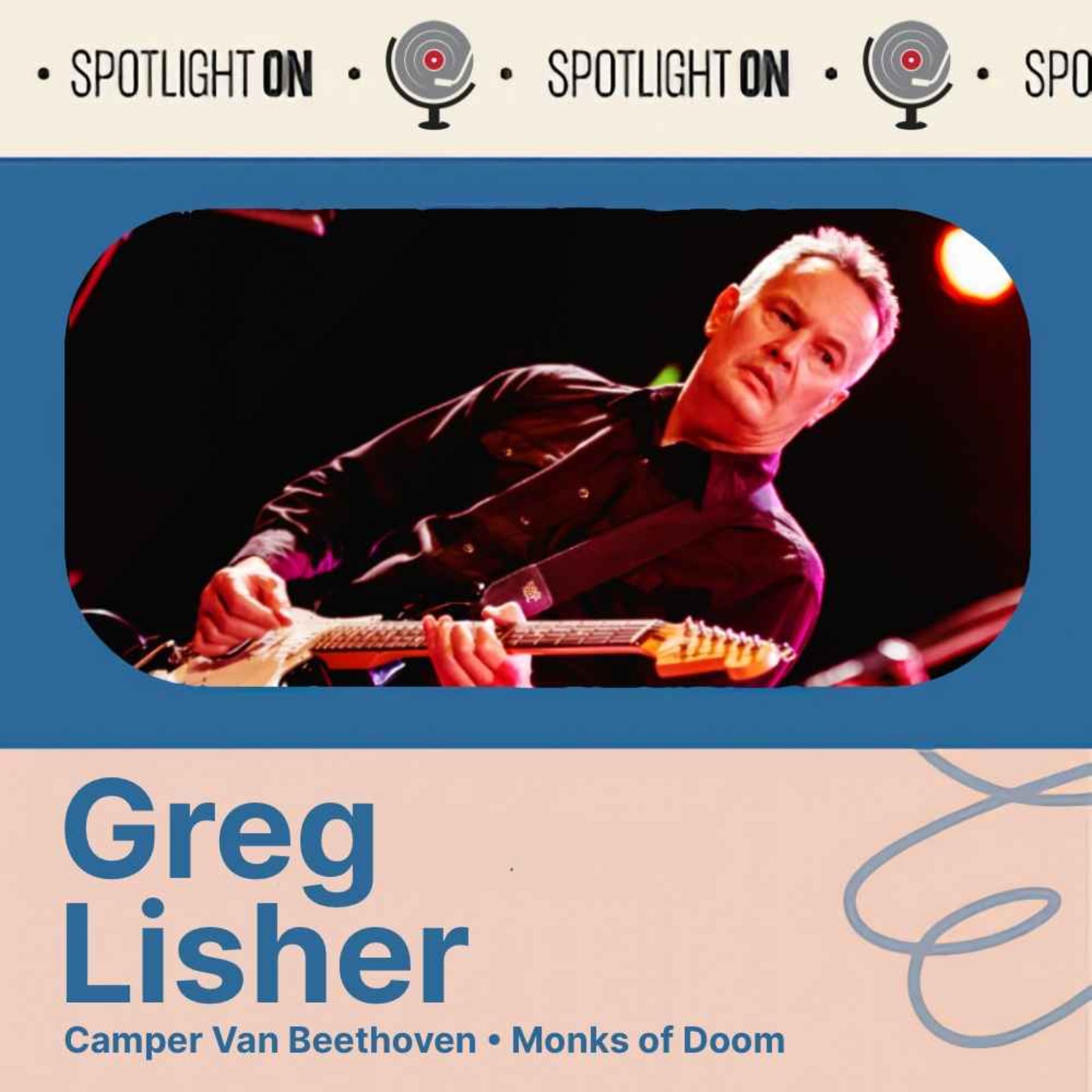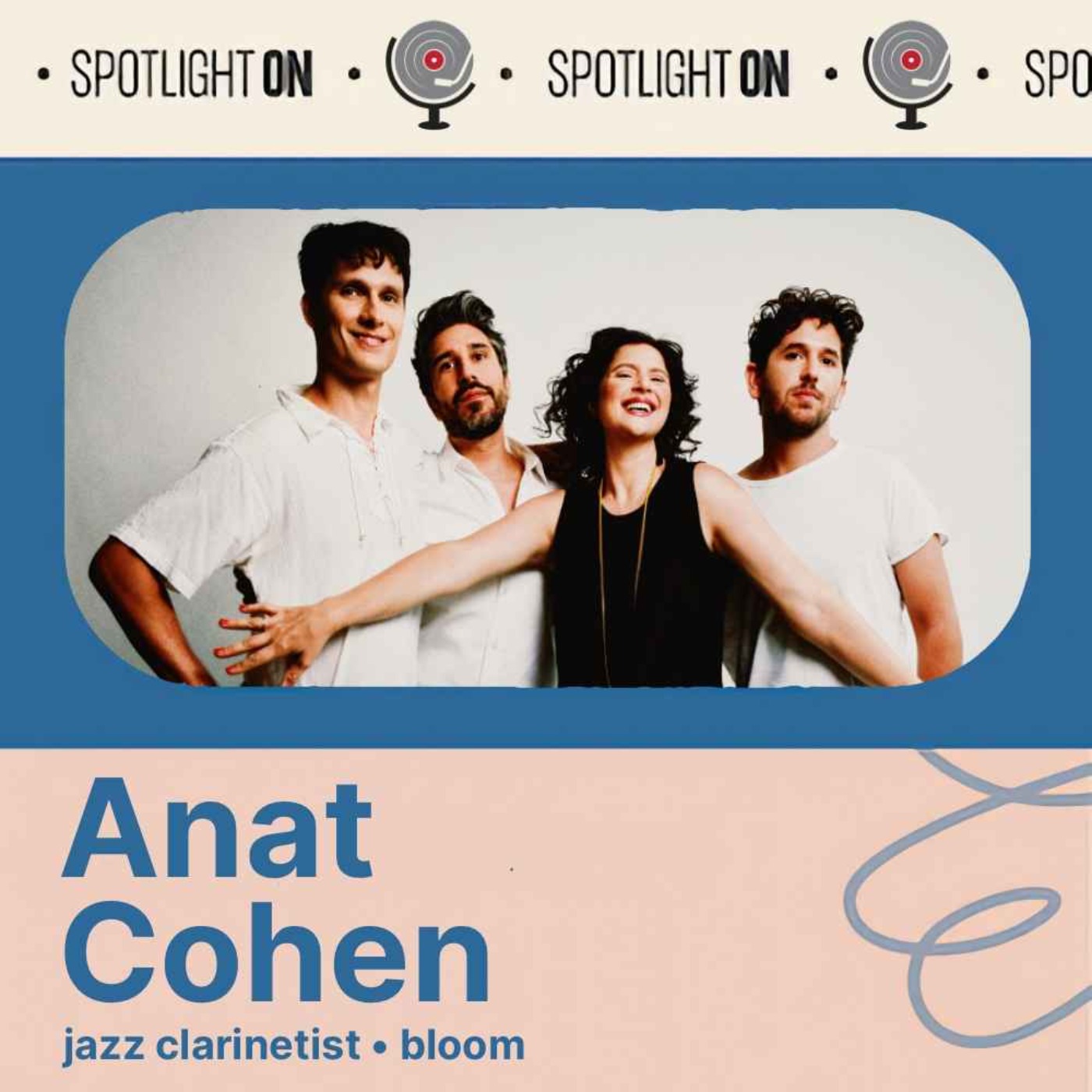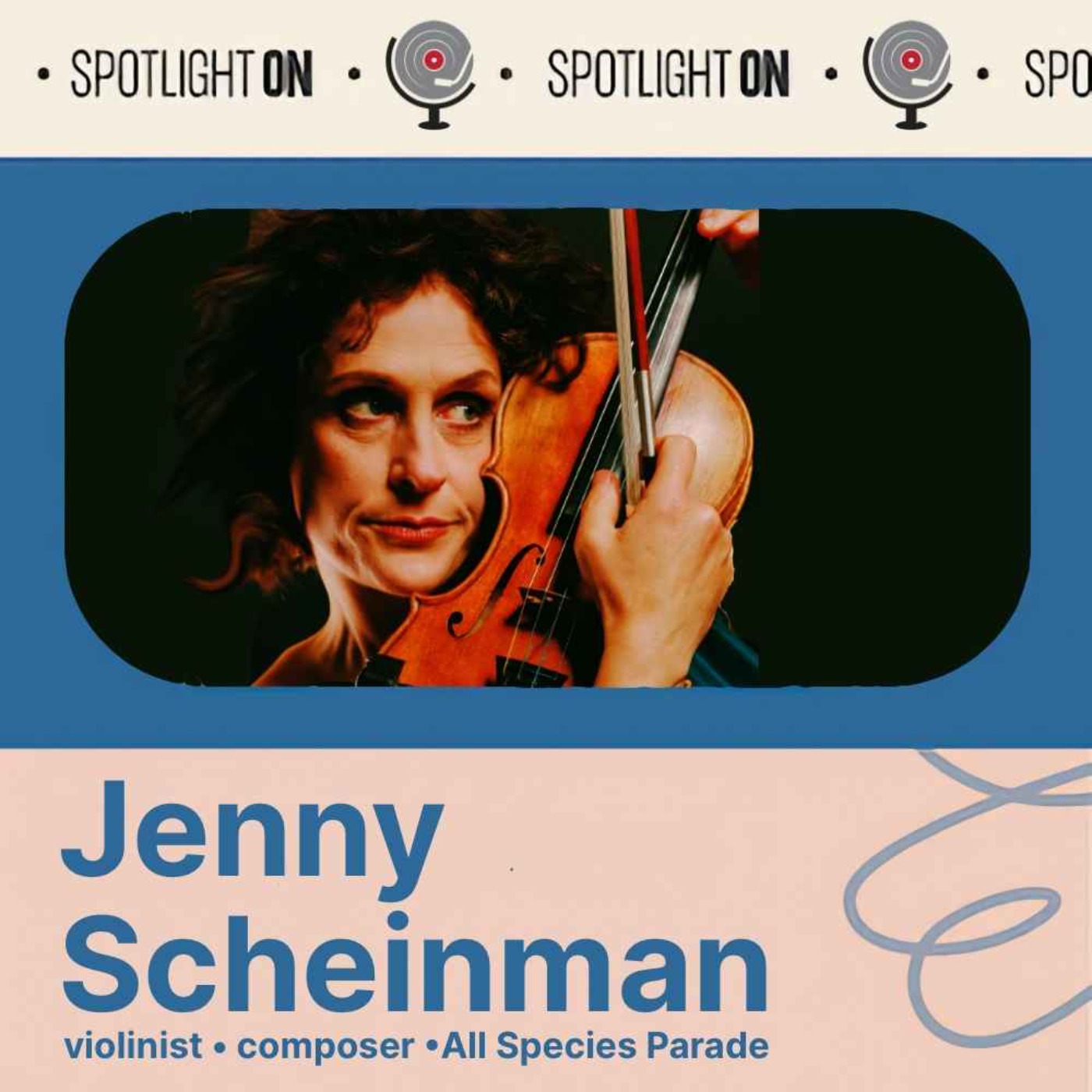Paul Stache: The Art of Running Smoke Jazz Club in NYC
With Smoke Jazz Club celebrating its 25th year, co-owner Paul Stache joins us to discuss the challenges and rewards of maintaining an essential venue for Manhattan's jazz community.
Today, the Spotlight shines On Paul Stache, co-owner (with his wife and partner Molly Sparrow Johnson) of Smoke Jazz Club, one of New York City’s premier live music venues. Smoke is celebrating its 25th anniversary throughout 2024 and Paul joined us to talk about the storied venue’s past, present, and future.
In addition to the club’s 25th Anniversary Celebration plans, we hit on topics like how their business has navigated the transition to a digital world, insight into managing an independent venue, as well as many of the amazing artists who have graced their stage over the years. Enjoy.
–
Dig Deeper
* Visit Smoke Jazz Club online at smokejazz.com
* Follow Smoke Jazz Club on Instagram, Facebook, and YouTube
* Visit Smoke Sessions Records at smokesessionsrecords.com or on Bandcamp
* Smoke Rises: A Jazz Room Returns on the Upper West Side
* Smoke Jazz & Supper Club reopens (video)
* Harold Mabern “The Iron Man: Live at Smoke” (video)
* Smoke Jazz Club NYC: Talking with Co-owner Paul Stache
–
• Did you enjoy this episode? Please share it with a friend! You can also rate Spotlight On ⭐️⭐️⭐️⭐️⭐️ and leave a review on Apple Podcasts.
• Subscribe! Be the first to check out each new episode of Spotlight On in your podcast app of choice.
• Looking for more? Visit spotlightonpodcast.com for bonus content, web-only interviews + features, and the Spotlight On email newsletter. You can also follow us on Instagram, Facebook, and Mastodon.
(This transcript has been lightly edited for clarity.)
LP: If I understand correctly, you're about a month and a half into what you call the twenty-fifth-anniversary festivities. Is that right?
Paul Stache: That's right. That's exactly right.
LP: What do those festivities look like? What are you doing differently, or how are you dressing up what you do in the context of a celebration?
Paul Stache: My goal was to bring as many artists to the club as possible who were involved in the early years when we first opened. At the same time, my other priority was to have as many Smoke premieres this year as possible. It's always great to bring new people in. We felt it was important to celebrate the legacy artists who have played in Smoke for almost twenty-five years and bring those back in.
LP: How big is the tent for you? Do you have a definition or a working definition of jazz, or what works for Smoke?
Paul Stache: I try hard not to. My priority is to present great music. We always talk about making the tent bigger. Some really exciting things are when you bring them together onto one stage. Those moments are really exciting, and those are special when you're grouping some of those legacy artists with young, thriving stars and you have intergenerational bands. That, I think, is very exciting. When you have a twenty-two-year-old musician just coming out of Juilliard with all the chops in the world together with an octogenarian, and you have a group of different generations, audiences respond well to that, and it's exciting for everyone, I think.
LP: Do you get the opportunity or create the opportunity to develop those pairings? Do you go to the artist and say, "Hey, I have a vision, and I think you all should share the bandstand?" Or are those walking in the door, coming to you, saying, "We want to do this thing, and we'd like a place to present it"? Could you briefly pull back the curtain about how something goes from the concept to the stage?
Paul Stache: I think both scenarios happen. I have close relationships with many artists who come through the club. We also have a record label and have artists record for our label. It has to make sense musically, and it's something that I enjoy doing. I do that for the live shows I produce at the club and some of the record dates that I produce on the label. That's the fun part of how to put a group together. Ultimately, it's the decision of the artists they want to play with. I might have an idea, and they say, "Yeah, I like that idea, but let's come up with something that might work." That part's exciting.
LP: What are the hats in common between running a record label and booking a venue?
Paul Stache: The club came first. The record label is celebrating its tenth anniversary this year. The club started quite a bit earlier, but the record label grew organically out of the club. Initially, before the pandemic, we had music seven nights a week. When you have that much music coming through the club, you can experience live music being road-tested and see how the audience responds. You have great groups coming through, and I can say, "Hey, this is a special one, I think. How do we feel about recording that?"
Sometimes we do it the other way around. Sometimes we say, "Let's put a group together with the idea that perhaps a recording can grow out of this." We give some thought to who the players will be to best play that music, and we usually bring the band into the club for a four- or five-night engagement. Sometimes, we record them live but often play the music for five nights. On Tuesday, we go into the studio and record a session. Then you have a situation where the band was really able to play that music set after set and try things out. It's a unique opportunity and situation; you can take some of that energy on the bandstand into the studio because you just played that music.
LP: What do you think about the role, viability, and what it means to be a record label in 2024? And how, if at all, have you seen that opportunity change over the ten years you've been doing it?
Paul Stache: Oh, it changes all the time. No question. It's a labor of love, no doubt about it. What's the saying? How do you make a million dollars in the jazz record business? You start with ten. [laughter] You must be careful and watch your budgets and expenses because it's very easy to spend more money than you can ever recover, but it always changes.
When we started ten years ago, we almost launched with a format that I don't think the world was quite ready for then. We probably would have failed if it hadn't been for a very smart radio producer at NPR station WBGO in New York, who talked me out of this from a radio standpoint. But the vision back then was just digital downloads and vinyl LPs. That was our concept. We ended up not doing that. We ended up doing CDs, which were our primary market for the first five years of our business. That's unique to jazz and classical music just because of the demographics.
Five years in, digital downloads were something that we weren't sure would survive. We were skeptical of the streaming world, not because of the concept, but because of the royalty rates. We weren't quite sure if that would ever add up. I remember buying a new iMac, and it didn't come with a disc drive. I knew we were in trouble.
I looked at some of the younger artists on our roster, and I thought that if they wanted to reach audiences under the age of forty-five, they had to be on Spotify and Apple Music to make new fans and have new audiences find them. There was a lot of criticism when we fully embraced the streaming world because there were concerns about how small jazz record labels would survive with those royalty rates. But we felt the train would leave the station with or without us. None of the DSPs will care if we put our records up there or not, but the artists will care, and I think we're going to put the music out there.
That was a decision that was made halfway through the tenure of the label. Now we're looking at it again, and it's a whole other question mark. There's a lot of AI music; it's a whole different thing. We're constantly reevaluating. We have now re-embraced the vinyl market. We're putting all our records out on vinyl now.
LP: It's really interesting, though. I don't know if I necessarily agree with the analogy I'm about to use, but I think it strikes me as something that you must be forced to contemplate sometimes, which is the streaming services, they live in this weird netherworld between being a format as well as a media. It's like they kind of are like radio, but they're also kind of like a CD. If you choose to view them like radio, which was how you initially described how you made peace with it, it's a great marketing vehicle. And if some pennies trickle in, wonderful. But if it replaces your format, it's much more problematic. How important is the audiophile world to you? Do you participate in the high-end streaming services?
Paul Stache: Yes, we do. One of my priorities early on was when we moved to studio recordings. I wanted to record high resolution in an analog studio and try to get that audiophile crowd press 180-gram vinyl and HD masters. I think that is an important market for jazz, certainly.
LP: Do you have much of a direct-to-consumer retail business at this point? It strikes me that the live streaming business is a way to make ongoing direct relationships with customers beyond just maybe some regulars that come in or a bit of a tourist crowd, but like having something where people now at home can transact with you and interact with the venue. Do you foresee that you will now have a direct channel to people's wallets and the ability to have ongoing relationships with them?
Paul Stache: We sell our CDs and vinyl LPs directly to consumers. People can do that. I think there's been a movement in that direction. I think Bandcamp sort of made that possible over there with that platform. Many people know our Bandcamp shop and buy every product there; sometimes, they buy multiple copies. People like that, and people realize it's going directly to the small business. You take Amazon out of the equation, and I think people take pride in buying directly to support small businesses.
The live streaming certainly allows us to connect people directly to the club. That, for us, is something that came out of the pandemic shutdown. We desperately tried to figure out a way to put music out there. We managed to produce a handful of records during complicated record sessions. Before there were tests readily available, everybody was masked, and it was a strange time, but we did those. But I think the live music that came out of the club during that time, the live streams, was an important experience for us, the musicians, and the listeners.
We developed a small but very loyal, regular crowd who tuned in every Friday and Saturday. We used YouTube as a platform at the time. That was an opportunity for the listeners to chat with one another. People would say, "I'm sitting here with a martini." "Oh, I'm sitting here with a cup of coffee and a cognac." It was a way for people to connect when we couldn't get together and be in the same room and listen to music. It was a strange time, but it was an emotional time. It was an important way to bring music to people, I think.
There is still a small group of really loyal fans, loyal jazz fans, fans of the club, and supporters of the club. They all contacted us before the reopening, pleading with us to keep the live streams going. So we are still doing that. I wouldn't call it a business model, so I'm not sure it's connecting to people's wallets. It's more about connecting to people in general via music.
LP: Without divulging any financial or viewership numbers that you're not comfortable divulging, how did you get it to the point where you could sustain it? Did you build enough of an infrastructure that is low cost or minimally incremental cost, so it's not killing you to do it if only a handful of people show up? Or if you don't sell enough tickets in advance, do you just not flick the switch? How viable it is, I guess, is what I'm asking.
Paul Stache: It's not automated. That was one of the things that I felt strongly about. It's got to look good, and it's got to sound good. We invested quite a bit of money in the initial setup to stream in HD and have six camera angles and moving cameras and all that stuff. I wish I could base it on advanced ticket sales. Many of those sales are last minute.
The way for me to justify it financially is we have a record label as well, and we still do quite a few live dates at the club, so having a good video of the artist is really crucial. If I put that record out, I want to have a video to coincide with it. Even if I end up not making a record date, that artist might come into the club again six or twelve months later, and now I have a high-quality video of the performance to promote that next performance. It's a promotional tool that promotes the venue, it promotes the artist, and if it doesn't make a profit or doesn't always pay for itself every night, it's a marketing tool.
LP: I think that is similar to what I do here at the podcast. We just recently crossed our 200th episode, and although there's not really a business model around having the catalog, when I reflect on it, I think it's never a bad thing to have this catalog of conversations and audio and video. Even if going into it you don't necessarily know what the opportunities will be, I can't imagine it's a bad thing having such great material, such great artists captured. Maybe, in some cases, the opportunities will present themselves. Like you said, at the very least it's promotional material. It seems like if you can do it, why not do it?
Paul Stache: That's right. In a way, too, it's an additional perk for the artists. As a small venue, we must make our offers to our artists as attractive as possible. We can't compete with seats that have two or three hundred capacity. For instance, Having a good piano is one way to do that. Having a good sound system, having the artists feel comfortable up there with a good microphone collection, a good sound system, and a good sound engineer are things that artists will appreciate.
Having the live-stream footage afterward is also an additional perk that the artists have. They get that footage afterward. They can use that footage for promotional purposes and promote their upcoming gigs, and they can chop it up into little clips. I think it's a marketing tool, not just for us, but for the artists. I think it's an important piece.
LP: It's interesting you mentioned the capacity because that's always blown my mind about your venue and growth. You've increased capacity, obviously, but not at the expense of intimacy. It's just really fascinating to me how you've made it work.
Paul Stache: It's always a challenge, no question about it. There are advantages to this, and there are challenges to it. The problem with the small room is that it's hard to make up for the quieter nights midweek with a really busy Saturday night because your Saturday night might sell out, but you can't put that many more people in to really make up for a slower midweek night. It's a challenge all the time.
Speaking of capacity, one of the things that nudged us to do this renovation was that we were sitting there, and a friend of ours who was an architect came in. I said, "Can you help us figure out these social distancing regulations? Figure out creatively how many people you think we could fit in here." We went in there, and when you have a room you've been in for a long time, you know that's the bar on the left-hand side, but you never really figure out what percentage of the room the bar actually takes up.
So now you measure and have your back bar, bartender aisle, bar counter, and bar stools. You realize all of a sudden, "Whoa, wait a minute. The bar area is more than a third of the club and we can't use it." Then we continued measuring and realized, "Okay, so the maximum capacity will be twelve." As someone who has tried to figure out how to make a small venue work over the years, I realized there was no way it would ever be a viable business with twelve seats. So we're like, "Well, I guess we'll have to wait this out. What do we do during that time? Let's find a way to get a little bit bigger. People will probably appreciate a little extra elbow room when we reopen."
It's a challenge. A real challenge for me and our team is figuring out how to keep it affordable for people because everything is expensive. New York has gotten ridiculously expensive. At the same time, we want to make sure that we can pay our artists a decent wage and find that balance between a ticket price that gets it done to pay the band and a ticket price that all age groups and all people can still enjoy live music. That's a balancing act that we must constantly deal with and continually tinkering with.
When we reopened, we implemented something we didn't have before because we always felt it was silly to do it in such a small room. Still, it became necessary to have different sections in the club where the music charge varies from a top-tier ticket to a ticket that's at times 75 percent less than the top ticket. We have premium seating right up front. We have seating with maybe a side view of the stage, about 30 percent less than the top-tier ticket. Then we have standard seating. And then we have this little section, a quirky little standing room that the Fire Department of New York approved us to have. Standing room is very regulated in New York.
So it's not the ideal setup for a standing-room area, but it has great sightlines of the stage. On a night when a ticket in the premium seating costs $55, you can get that ticket for $20. It allows students, young musicians, or people who can't pay $55 for a ticket to experience live music. We think it's really important.
LP: It sounds like there's a real sensitivity to balancing all the stakeholders there, whether it's your responsibility as a business owner, your commitment to the artist, your commitment to developing an audience, and providing a good audience experience. I would imagine that level of consideration contributes to our conversation, which marks the twenty-fifth anniversary of the venue. You don't stay in business like that for twenty-five years by not thinking about the constituents' needs.
Paul Stache: Standing still is not really an option. It's not a static concept. You must look at, reevaluate, and change things over time. What may work in one decade may not work in the next. Right now, I think we're all dealing with the fact that everybody feels life has gotten too expensive, and I don't blame them, but it's tricky at times. Wholesale costs are crazy, and you must always reevaluate things.
LP: You mentioned earlier in our conversation that you were doing seven nights a week and now you're down to five. Is that a lifestyle choice, or do you aspire to get back to seven?
Paul Stache: That's an interesting question. A little bit of both. When we first reopened, we were a very small team. Many people who had been with us for a long time either left the industry or New York City. A lot of people reevaluated what they were doing during the pandemic. There were maybe two or three people who returned to reopen. We basically had to build a new team from scratch. We had difficulty finding a team quickly enough to do seven nights a week.
The other part of this is also the minimum wage increase in New York. As difficult as they are for small businesses, they are necessary, but the result is that labor costs are much higher. I used to be able to open on a Monday or Tuesday night and deal with the economics of maybe having the room only half full. When I'm looking at what that costs now, the operating costs, given the labor costs we're dealing with now, are not really affordable. I have to be able to focus on the peak nights where I at least have a chance of getting a full show, and that's not always possible on a Monday or Tuesday.
However, the third important point is that I own and operate the place with my business partner, my wife. We're a family operation. We have two kids. Needing a little time off and having the venue closed is important for us. We need to recharge the batteries and we need to have a little time away from it. So that's another consideration in this.
LP: Are the kids interested in the music or the business?
Paul Stache: You know, that's interesting. They're ten and fourteen. So it's probably a little early to figure that out. I'm not someone who would ever have those kinds of expectations of my kids to tell them that they have to take over the family business. They might look at us and say, "You guys are crazy. You work too much, and I don't want anything to do with it." And I would laugh and say, "Yes, you're probably right."
They do love music. My ten-year-old plays drums. My fourteen-year-old plays, or perhaps I should have said played, piano. It's unfortunately something that fell a little bit behind during the pandemic. Music lessons over Zoom were not nearly as exciting to him as ensemble classes in person. So he's trying to get back to it. I don't know, but I'm unsure if they would be interested in taking over the family business. They're welcome to, but there's no pressure from us.
LP: You've mentioned piano a couple of times now. You mentioned the importance of the investment you made in the piano. Piano really seems to be having a moment. I get a lot of interesting pianists here in these conversations. And I wonder, do you see that when you look back over twenty-five years? Do certain instruments have their moments and then recede? Or how do you see those musical moments come and go or musical trends?
Paul Stache: That's interesting. I've not noticed that. I wouldn't have noticed a trend by instrument. I can tell you that we've had some incredible pianists come through the club. The one that will first come to mind, of course, is the late great Harold Mabern, who was important to the club, who performed on opening night in 1999, and who was one of our biggest supporters and an incredible musician and an even greater human being and somebody who recorded for us. He was the first record we ever released.
We were really lucky to have him. Larry Willis, Ronnie Matthews. I mean, there are a lot of giants of this music that came through the club who were pianists and still are. We have an incredible lineup of pianists coming through the club this summer from Cyrus Chestnut to Eric Reed, Vijay Iyer, and Kevin Hays. There are a lot of great pianists coming through.
One of my favorite formats at the club, purely in a musical sense, is the Piano Trio because it is not always the most popular format in terms of ticket sales. However, my favorite format is the Piano Trio. When we opened twenty-five years ago, one of my first ideas was to have a Piano Trio night, and it was Thursday night at the time. I really wanted that to work. We had some incredible shows and some successful ones, but they are not always the most popular format. I think that in a jazz club, people appreciate a solo as a horn player with a band and that's great. Many great horn players coming through. Of course, we're very lucky to have this weekend, for instance, the great Nicholas Payton coming through, a trumpeter and pianist, actually multi-instrumentalist, but I really love the piano trio. Cedar Walton trio used to come through. It was just magic.
LP: Outside of this, I've been involved with many independent venues in my professional life. Do you have relationships with other venue owners and operators, or are you an island of one? How is that for you as a professional community?
Paul Stache: Now, more so than before the pandemic. It's a small community of people that come and love this music. It's a very loyal group, but it's a small group. I always felt that we should be probably closer to one another as club owners than we are. People often see it as competitive and feel that we vie for the same audiences, which I don't think is quite true. Smoke, in particular, has a very specific local crowd. We're not downtown. There's no huge tourist foot traffic naturally on 106th and Broadway.
I made more calls to other club owners during the pandemic than ever before. We were all just trying to figure out what we were going to do. We were comparing notes. "Did you get this grant application? Did you get this loan application? How are you dealing with this? What are you doing with livestream? What are you doing with masking?" You know, all that stuff.
One of the reasons we're still around is we were one of the few venues with a landlord who was supportive. We said, "You've been here this long. Let's talk about it on the other end of the pandemic. Don't worry." And that's how it should be, but that's not how it usually is. Especially in New York, it can be very tricky. I know many other club owners were pressured by their landlords to continue paying rent even though they weren't making any money. So, we were lucky that way.
LP: Do you aspire to own a building, or is that too big of a bite in New York?
Paul Stache: I think it's too big of a bite in New York for what we're doing. I wish I had that opportunity. I tried fifteen years ago to convince the building owner to sell me the commercial space. We didn't even get to a price tag. I'm not even sure if I would have been able to figure out its finances, but they were not interested in doing that.
After the pandemic, before we started the renovation, we were thinking we could go somewhere else. When you have a loyal neighborhood following and a supportive landlord who wants you there, you can't take those things for granted. That's important. So we decided to stay where we are. Would it be helpful to own the space? Of course, it would be, but I'm not sure that a jazz club and a jazz record label can bring in the revenue to make that possible. Not in New York City anyway.
LP: I think about the nature of competition with venues, and it can be sort of zero-sum, right? If there are two rock bands playing at two different clubs, maybe somebody's at Bowery Ballroom, and somebody's in a room out in Brooklyn, I can probably only go to one of those shows. But I remember so many times in New York, because of the nature of jazz clubs in the multiple sets, catching a show at your place or Jazz Standard and then hopping in the taxi and going downtown and catching a late set at the Blue Note and just feeling like those were incredible New York nights. So exciting to be zipping around and seeing these world-class musicians. And it's something that's so unique to that music, right? The formats of the shows have established themselves over the years in sixty-, seventy-, and eighty-minute sets, with the ability to do an early and a late. The business needs multiple sets a night. I have this very romantic memory of those nights in my mind.
Paul Stache: I was one of those people too, and I think that still happens. That's, in a nutshell, maybe less of a competitive field than some people think it is. People still go to Smoke for the first set, grab dinner, and then see the late set at the Vanguard, Birdland, or Smalls. I mean, that happens all the time. Ultimately, the jazz audiences are really loyal audiences. They love this music and will do exactly what you were just talking about.

Paul Stache
Co-Founder, SMOKE Jazz Club
Paul Stache is the founder and co-owner (with wife and partner Molly Sparrow Johnson) of Smoke Jazz Club, one of New York City’s premier live music venues. Smoke is celebrating its 25th anniversary this year. Paul is also the president of the GRAMMY-nominated label Smoke Sessions Records where he has produced titles by artists like George Coleman, Harold Mabern, Eddie Henderson, Peter Bernstein, Vincent Herring, Eric Reed, Nicholas Payton, and Renee Rosnes. A native of Berlin, he moved to NYC at the age of 19.
